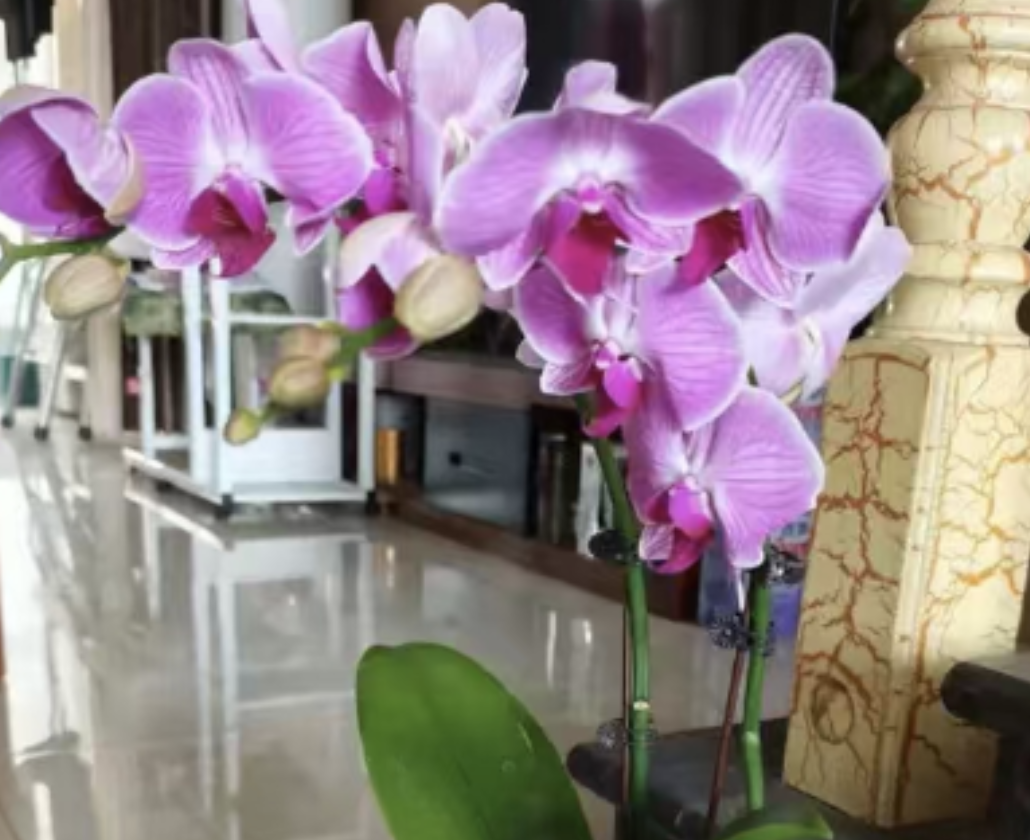Today, I'd like to share with you this Snowflake Big Tongue Phalaenopsis, which is truly a "treasure" variety among Phalaenopsis.
The Snowflake Big Tongue Phalaenopsis belongs to the small and medium-sized flower type of Phalaenopsis. Its leaves are small yet delicate, and the flowers are closely clustered together, making the overall ornamental value truly outstanding. Moreover, it has double stems and a total of 27 flowers. The diameter of each individual flower is about 6 - 7 cm, which is just the right size. The leaves are approximately 15 cm long, and the flower stalks are about 20 cm long. With such proportions, whether it is placed on the coffee table in the living room or on the windowsill in the study, it can become a beautiful sight.
The flowering period of the Snowflake Big Tongue Phalaenopsis is relatively long. Generally speaking, if properly cared for, it can bloom continuously from winter to spring, lasting for about 3 - 4 months.
Compared with some delicate and difficult-to-care-for flower varieties, the Snowflake Big Tongue Phalaenopsis is relatively easy to cultivate. It doesn't require too many complicated care steps. As long as you master the basic maintenance points, both novice flower growers and busy office workers can make it grow vigorously and bloom with gorgeous flowers.
Maintenance Points:
Light: It prefers bright, scattered light. It is advisable to place it on an east-facing or west-facing windowsill to receive 3 - 4 hours of light per day. Avoid direct sunlight.
Temperature: The ideal temperature range is 18 - 28 °C. In summer, take measures to cool it down, and in winter, keep it warm (above 15 °C).
Watering: Water thoroughly when the surface of the substrate is dry for 1 - 2 cm. Use clean water and adjust the watering frequency according to the season.
Fertilization: Apply a thin liquid fertilizer once every 2 - 3 weeks during the growth season. Increase the application of phosphorus and potassium fertilizers during the flower bud differentiation stage, and avoid getting the fertilizer on the leaves and flowers.
Ventilation: Regularly open windows or use an air circulator to enhance air flow while avoiding direct blowing on the plant.
Potting: Repot it once every 1 - 2 years. Choose a slightly larger flowerpot and breathable substrate. After repotting, let the plant recover for a while.
Pest and Disease Control: Regularly inspect it to prevent diseases such as soft rot and black spot disease, and control pests such as scale insects and red spiders.
Precautions:
1. Control watering: Avoid overwatering. Its roots are afraid of waterlogging to prevent root rot that may affect its growth and survival.
2. Stabilize temperature: Prevent sudden changes in temperature. Sudden changes in high or low temperatures can cause the flowers to wither and the leaves to turn yellow. Keep the environmental temperature stable.
3. Check for pests and diseases: Although it is relatively resistant to pests and diseases, it is necessary to regularly check the leaves, flowers, and roots. If signs such as black spots or aphids are found, take timely preventive and control measures to avoid their spread.
How big are the flowers of the Snowflake Big Tongue Phalaenopsis?

Share with
Tagged in :




Leave a Reply